Category
Recent Comments
Trending
-
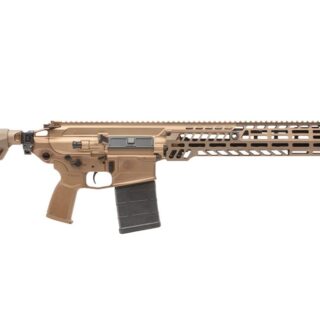 SIG Sauer MCX Virtus
Rated 0 out of 5
SIG Sauer MCX Virtus
Rated 0 out of 5$4,450.00Original price was: $4,450.00.$4,099.00Current price is: $4,099.00. -
 Heckler & Koch MR762A1
Rated 0 out of 5
Heckler & Koch MR762A1
Rated 0 out of 5$4,010.00Original price was: $4,010.00.$3,790.01Current price is: $3,790.01. -
 FN SCAR 17S
Rated 0 out of 5
FN SCAR 17S
Rated 0 out of 5$3,900.00Original price was: $3,900.00.$3,620.00Current price is: $3,620.00. -
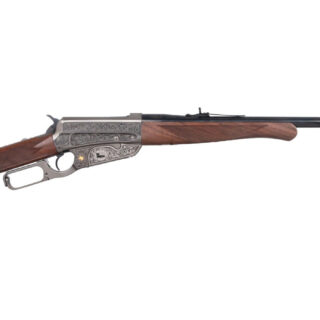 Winchester 1895 Texas Rangers 200th Anniversary Custom Grade 30-06 Springfield Rifle with Engraved Receiver and Walnut Stock
Rated 0 out of 5
Winchester 1895 Texas Rangers 200th Anniversary Custom Grade 30-06 Springfield Rifle with Engraved Receiver and Walnut Stock
Rated 0 out of 5$3,450.00Original price was: $3,450.00.$3,099.01Current price is: $3,099.01. -
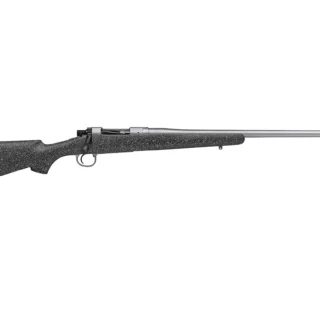 Nosler M21 Bolt Action Centerfire Rifle
Rated 0 out of 5
Nosler M21 Bolt Action Centerfire Rifle
Rated 0 out of 5$2,950.00Original price was: $2,950.00.$2,499.00Current price is: $2,499.00. -
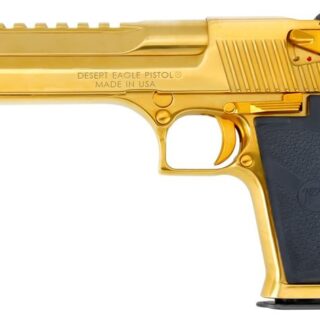 Desert Eagle Gold .50 A.E. MARK XIX TITANIUM GOLD
Rated 5.00 out of 5
Desert Eagle Gold .50 A.E. MARK XIX TITANIUM GOLD
Rated 5.00 out of 5$3,010.00Original price was: $3,010.00.$2,399.00Current price is: $2,399.00. -
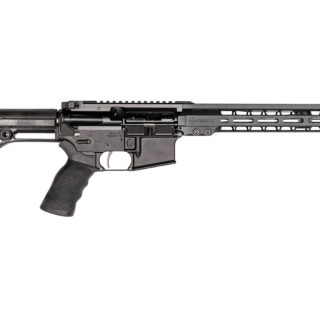 M-15 13 COMPETITION RIFLE
Rated 0 out of 5
M-15 13 COMPETITION RIFLE
Rated 0 out of 5$2,225.00Original price was: $2,225.00.$2,039.00Current price is: $2,039.00. -
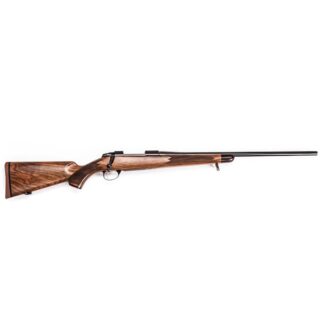 Nosler M48 Heritage Bolt Action Centerfire Rifle
Rated 0 out of 5
Nosler M48 Heritage Bolt Action Centerfire Rifle
Rated 0 out of 5$2,225.00Original price was: $2,225.00.$1,895.00Current price is: $1,895.00. -
 Daniel Defense DDM4 V7 Semi-Auto Rifle
Rated 0 out of 5
Daniel Defense DDM4 V7 Semi-Auto Rifle
Rated 0 out of 5$1,980.00Original price was: $1,980.00.$1,820.00Current price is: $1,820.00. -
 Springfield Armory Standard M1A Semi-Auto Rifle
Rated 0 out of 5
Springfield Armory Standard M1A Semi-Auto Rifle
Rated 0 out of 5$1,900.00Original price was: $1,900.00.$1,720.00Current price is: $1,720.00. -
 IWI Tavor X95 Semi-Automatic Centerfire Rifle
Rated 0 out of 5
IWI Tavor X95 Semi-Automatic Centerfire Rifle
Rated 0 out of 5$1,850.00Original price was: $1,850.00.$1,690.00Current price is: $1,690.00. -
 MARLIN 336 TACTICAL 30/30WIN
Rated 0 out of 5$1,509.99
MARLIN 336 TACTICAL 30/30WIN
Rated 0 out of 5$1,509.99
shotgun is a type of firearm that is designed to discharge a cluster of small spherical pellets or a single solid projectile, depending on the type of ammunition used. Shotguns are known for their versatility and are commonly used for a variety of purposes, including hunting, sport shooting, self-defense, and law enforcement.
Here are some key characteristics and information about shotguns:
- Action Types: Shotguns come in various action types, including pump-action, semi-automatic, break-action (single-shot or double-barrel), and bolt-action. Each type has its advantages and is suited for different purposes.
- Gauge: Shotguns are categorized by their gauge, which refers to the diameter of the bore. Common gauges include 12-gauge, 20-gauge, and .410 bore, with 12-gauge being the most common and versatile.

- Ammunition: Shotguns can fire a variety of ammunition types, including shotshells (for shooting multiple pellets), slugs (for firing a single large projectile), and specialty rounds like bean bags or less-lethal munitions. The choice of ammunition depends on the intended use of the shotgun.
- Barrels: Shotguns typically have smoothbore barrels, but some are equipped with rifled barrels, especially those intended for firing slugs accurately at longer ranges.
- Choke: Many shotguns are equipped with a choke, which is a constriction at the end of the barrel that affects the spread of shot pellets. Common choke types include full, modified, and improved cylinder.
- Uses: Shotguns are used for a wide range of purposes, including:
Shotgun Available
- Hunting: Shotguns are commonly used for hunting various game, such as waterfowl, upland birds, deer, and small game. The choice of shotgun and ammunition depends on the type of game being pursued.
- Sport Shooting: Shotguns are used in various shooting sports, including clay target shooting (trap, skeet, and sporting clays).
- Home Defense: Some individuals choose shotguns for home defense due to their effectiveness at close range.
- Law Enforcement: Law enforcement agencies often use shotguns for less-lethal munitions, breaching doors, and other tactical purposes.
- Military: Shotguns are sometimes used in military applications, including as breaching tools or for crowd control.
- Safety: As with all firearms, safety is paramount when handling shotguns. This includes proper storage, handling, and adherence to local laws and regulations.
- Accessories: Shotguns can be customized with various accessories, including stocks, sights, forends, and extended magazines, to suit the shooter’s preferences and intended use.
- Laws and Regulations: The ownership and use of shotguns are subject to legal regulations that vary by country and state or region. It’s crucial for owners to be aware of and comply with these laws.
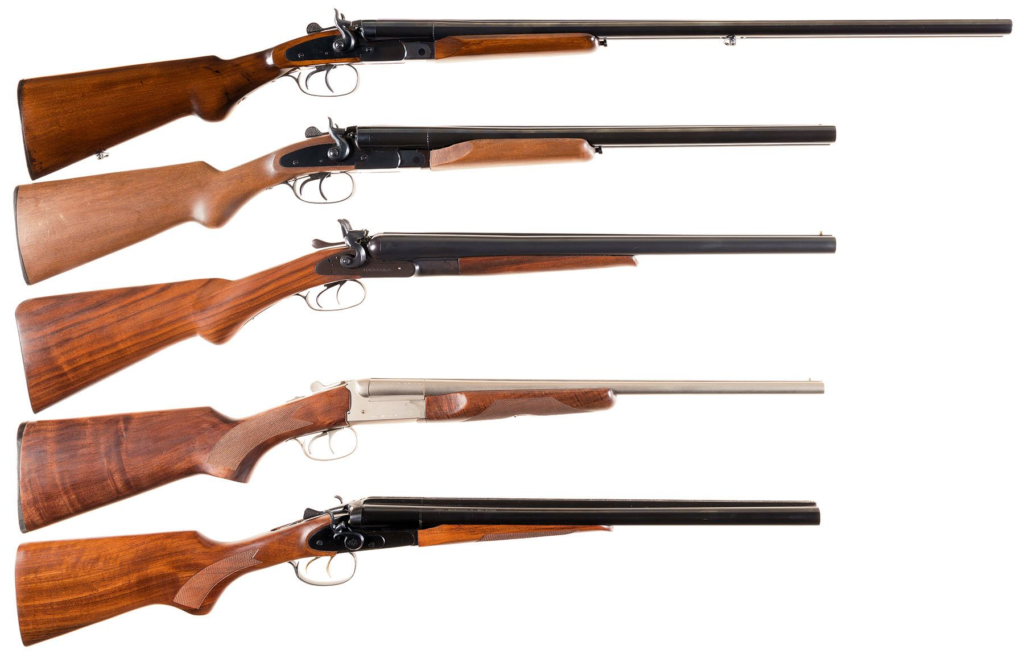
Shotguns are versatile firearms with a long history of use in various applications. Whether for hunting, sport shooting, or other purposes, they continue to be popular choices among firearm enthusiasts and professionals.
spas 12s,spas 12 for sale,gold desert eagle 50 cal,how many bullets does a glock 17 hold,bulk 6.5 creedmoor,what are rip rounds,ss198lf sale,desert eagle gold,bolt action glock,5.7×28 ammo for sale,aac 5.7x28mm,9mm rip rounds legal,cci primers for 45 acp,spas 12 cost,21 nosler,desert eagle 50 gold,,glock fbi mag release,spas shotgun price,spas-12 jurassic park,bulk 6.5 creedmore,buy spas 12,spas 12 shotgun price,beretta arx 100 for sale,gold desert eagle 50,gold desert eagle 44,franchi law 12,best glocks,best semi auto rifles 2022,50ae vs 9mm,nosler 21,cheap sks for sale
Midway Weapons Shotgun

In the event that you are searching for mass ammo, you went to the right site! We highly esteem offering unquestionably the best arrangements to the most genuine shooters for mass handgun ammunition, mass rifle ammunition, mass shotgun ammunition, and mass rimfire ammunition.
Look at our huge determination of in-stock ammo. We convey every one of the most famous types and a gigantic determination of more specialty types as well. Anything you desire, we have it estimated modest and prepared to transport quick.
SHOTGUNS FOR SALE
Shop all brands, makes & models of shotguns from your favorite manufacturers right here, on Guns.com! Your one stop shop for all things firearms & accessories. You’ll find shotguns from top manufacturers including Winchester, Remington, Mossberg, Browning, Benelli, Beretta, and many more. Our inventory contains single-barrel, double-barrel, autoloading, break action, and pump-action. With both new and used shotguns, we have price points suitable for every budget.
Whether you are shopping for home defense, hunting, target sports, competition or anything in between, our options continue to grow with THOUSANDS of available firearms & new ones added daily. Guns.com proudly offers competitive deals and continues to be the best place to buy a firearm online – period.
shotgun (also known as a scattergun, peppergun,[1] or historically as a fowling piece) is a long-barreled firearm designed to shoot a straight-walled cartridge known as a shotshell, which discharges numerous small spherical projectiles called shot, or a single solid projectile called a slug. Shotguns are most commonly used as smoothbore firearms, meaning that their gun barrels have no rifling on the inner wall, but rifled barrels for shooting sabot slugs (slug barrels) are also available.
Shotguns come in a wide variety of calibers and gauges ranging from 5.5 mm (.22 inch) to up to 5 cm (2.0 in), though the 12-gauge (18.53 mm or 0.729 in) and 20-gauge (15.63 mm or 0.615 in) bores are by far the most common. Almost all are breechloading, and can be single-barreled, double-barreled, or in the form of a combination gun. Like rifles, shotguns also come in a range of different action types, both single-shot and repeating. For non-repeating designs, over-and-under and side-by-side break action shotguns are by far the most common variants. Although revolving shotguns do exist, most modern repeating shotguns are either pump-action or semi-automatic, and also fully automatic, lever-action or bolt-action to a lesser extent.
Preceding smoothbore firearms (such as the musket) were widely used by European militaries from the 17th until the mid-19th century.[2] The muzzleloading blunderbuss, the direct ancestor of the shotgun, was also used in similar roles from self-defense to riot control. Shotguns were often favored by cavalry troops in the early to mid-19th century because of its ease of use and generally good effectiveness on the move, as well as by coachmen for its substantial power. But by the late 19th century, these weapons became largely replaced on the battlefield by breechloading rifled firearms shooting spin-stabilized cylindro-conoidal bullets, which were far more accurate with longer effective ranges. The military value of shotguns was rediscovered in the First World War, when American forces used the pump-action Winchester Model 1897 shotgun in trench fighting to great effect. Since then, shotguns have been used in a variety of close quarters combat roles in civilian, law enforcement, and military applications.
The smoothbore shotgun barrel generates less resistance and thus allows greater propellant loads for heavier projectiles without as much risk of overpressure or a squib load, and are also easier to clean. The shot pellets from a shotshell are propelled indirectly through a wadding inside the shell and scatter upon leaving the barrel, which is usually choked at the muzzle end to control the projectile scatter. This means each shotgun discharge will produce a cluster of impact points instead of a single point of impact like other firearms. Having multiple projectiles also means the muzzle energy is divided among the pellets, leaving each individual projectile with less penetrative kinetic energy. The lack of spin stabilization and the generally suboptimal aerodynamic shape of the shot pellets also make them less accurate and decelerate quite quickly in flight due to drag, giving shotguns short effective ranges. In a hunting context, this makes shotguns useful primarily for hunting fast-flying birds and other agile small/medium-sized game without risking overpenetration and stray shots to distant bystander and objects. However, in a military or law enforcement context, the high short-range blunt knockback force and large number of projectiles makes the shotgun useful as a door breaching tool, a crowd control or close-quarters defensive weapon. Militants or insurgents may use shotguns in asymmetric engagements, as shotguns are commonly owned civilian weapons in many countries. Shotguns are also used for target–shooting sports such as skeet, trap, and sporting clays, which involve flying clay disks, known as “clay pigeons“, thrown in various ways by a dedicated launching device called a “trap”.
Design factors
Action
The action is the operating mechanism of a gun. There are many types of shotguns, typically categorized by the number of barrels or the way the gun is reloaded.
Break-action
Main article: Double-barreled shotgun

For most of the history of the shotgun, the breechloading break-action shotgun was the most common type, and double-barreled variants are by far the most commonly seen in modern days. These are typically divided into two subtypes: the traditional “side-by-side” shotgun features two barrels mounted horizontally beside each other (as the name suggests), whereas the “over-and-under” shotgun has the two barrels mounted vertically one on top of the other. Side-by-side shotguns were traditionally used for hunting and other sporting pursuits (early long-barreled side-by-side shotguns were known as “fowling pieces” for their use hunting ducks and other waterbirds as well as some landfowls), whereas over-and-under shotguns are more commonly associated with recreational use (such as clay pigeon shooting). Both types of double-barrel shotgun are used for hunting and sporting use, with the individual configuration largely being a matter of personal preference.
Another, less commonly encountered type of break-action shotgun is the combination gun, which is an over-and-under design with one smoothbore barrel and one rifle barrel (more often with a rifle barrel on top, but a rifle barrel on bottom was not uncommon). There is also a class of break-action guns called drillings, which contain three barrels, usually two smoothbore barrels of the same gauge and a rifled barrel, though the only common theme is that at least one barrel be smoothbore. The most common arrangement was essentially a side-by-side shotgun with the rifled barrel below and centered. Usually a drilling containing more than one rifled barrel would have both rifled barrels in the same caliber, but examples do exist with different caliber barrels, usually a .22 long rifle and a centerfire cartridge. Although very rare, drillings with three and even four (a vierling) shotgun barrels were made.
Pump-action

In pump-action shotguns, a linearly sliding fore-end handguard (i.e. pump) is manually moved back-and-forth like a hand pump to work the action, extracting the spent shell and inserting a new round, while cocking the hammer or striker. A pump-action shotgun is typically fed from a tubular magazine underneath the barrel, which also serves as a guide rail for the pump. The rounds are fed in one by one through a port in the receiver, where they are lifted by a lever called the elevator and pushed forward into the chamber by the bolt. A pair of latches at the rear of the magazine hold the rounds in place and facilitate feeding of one shell at a time. If it is desired to load the gun fully, a round may be loaded through the ejection port directly into the chamber, or cycled from the magazine, which is then topped off with another round. Well-known examples include the Winchester Model 1897, Remington 870, and Mossberg 500/590.
Pump-action shotguns are common hunting, fowling and sporting shotguns. Hunting models generally have a barrel between 600 and 700 mm (24″-28″). Tube-fed models designed for hunting often come with a dowel rod or other stop that is inserted into the magazine and reduces the capacity of the gun to three shells (two in the magazine and one chambered) as is mandated by U.S. federal law when hunting migratory birds. They can also easily be used with an empty magazine as a single-shot weapon, by simply dropping the next round to be fired into the open ejection port after the spent round is ejected. For this reason, pump-actions are commonly used to teach novice shooters under supervision, as the trainer can load each round more quickly than with a break-action, while unlike a break-action the student can maintain his grip on the gun and concentrate on proper handling and firing of the weapon.
Pump-action shotguns with shorter barrels and little or no barrel choke are highly popular for use in home defense, military and law enforcement, and are commonly known as riot guns. The minimum barrel length for shotguns in most of the U.S. is 18 inches (460 mm), and this barrel length (sometimes 18.5–20 in (470–510 mm) to increase magazine capacity and/or ensure the gun is legal regardless of measuring differences[3]) is the primary choice for riot shotguns. The shorter barrel makes the weapon easier to maneuver around corners and in tight spaces, though slightly longer barrels are sometimes used outdoors for a tighter spread pattern or increased accuracy of slug projectiles. Home-defense and law enforcement shotguns are usually chambered for 12-gauge shells, providing maximum shot power and the use of a variety of projectiles such as buckshot, rubber, sandbag and slug shells, but 20-gauge (common in bird-hunting shotguns) or .410 (common in youth-size shotguns) are also available in defense-type shotgun models allowing easier use by novice shooters.
A riot shotgun has many advantages over a handgun or rifle. Compared to “defense-caliber” handguns (chambered for 9mm Parabellum, .38 Special, .357 Magnum, .40 S&W, .45 ACP and similar), a shotgun has far more power and damage potential (up to 10 times the muzzle energy of a .45 ACP cartridge), allowing a “one-shot stop” that is more difficult to achieve with typical handgun loads. Compared to a rifle, riot shotguns are easier to maneuver due to the shorter barrel, still provide better damage potential at indoor distances (generally 3–5 meters/yards), and reduce the risk of “overpenetration”; that is, the bullet or shot passing completely through the target and continuing beyond, which poses a risk to those behind the target through walls. The wide spread of the shot reduces the importance of shot placement compared to a single projectile, which increases the effectiveness of “point shooting” – rapidly aiming simply by pointing the weapon in the direction of the target. This allows easy, fast use by novices.
Lever-action

Early attempts at repeating shotguns invariably centred around either bolt-or lever-action designs, drawing inspiration from contemporary repeating rifles, with the earliest successful repeating shotgun being the lever-action Winchester M1887, designed by John Browning at the behest of the Winchester Repeating Arms Company.
Lever shotguns, while less common, were popular in the late 19th century with the Winchester Model 1887 and Model 1901 being prime examples. Initially very popular, demand waned after the introduction of pump-action shotguns around the start of the 20th century, and production was eventually discontinued in 1920.
One major issue with lever-actions (and to a lesser extent pump-actions) was that early shotgun shells were often made of paper or similar fragile materials (modern hulls are plastic or metal). As a result, the loading of shells, or working of the action of the shotgun, could often result in cartridges getting crushed and becoming unusable, or even damaging the gun.
Lever shotguns have seen a return to the gun market in recent years, however, with Winchester producing the Model 9410 (chambering the .410 gauge shotgun shell and using the action of the Winchester Model 94 series lever-action rifle, hence the name), and a handful of other firearm manufacturers (primarily Norinco of China and ADI Ltd. of Australia) producing versions of the Winchester Model 1887/1901 designed for modern 12-gauge smokeless shotshells with more durable plastic casings. There has been a notable uptick in lever-action shotgun sales in Australia since 1997, when pump-actions were effectively outlawed.
Bolt-action
Bolt-action shotguns, while uncommon, do exist. One of the best-known examples is a 12-gauge manufactured by Mossberg featuring a 3-round magazine, marketed in Australia just after changes to the gun laws in 1997 heavily restricted the ownership and use of pump-action and semi-automatic shotguns. They were not a huge success, as they were somewhat slow and awkward to operate, and the rate of fire was noticeably slower (on average) than a double-barrelled gun. The Rifle Factory Ishapore in India also manufactured a single-shot .410 bore shotgun based on the SMLE Mk III* rifle. The Russian Berdana shotgun was effectively a single-shot bolt-action rifle that became obsolete, and was subsequently modified to chamber 16-gauge shotgun shells for civilian sale. The U.S. military M26 is also a bolt-action weapon. Bolt-action shotguns have also been used in the “goose gun” application, intended to kill birds such as geese at greater range. Typically, goose guns have long barrels (up to 36 inches), and small bolt-fed magazines. Bolt-action shotguns are also used in conjunction with slug shells for the maximum possible accuracy from a shotgun.[4]
In Australia, some straight-pull bolt-action shotguns, such as the Turkish-made Pardus BA12 and Dickinson T1000, the American C-More Competition M26, as well as the indigenous-designed SHS STP 12, have become increasingly popular alternatives to lever-action shotguns, largely due to the better ergonomics with less stress on the shooter’s trigger hand and fingers when cycling the action.
Revolver

Colt briefly manufactured several revolving shotguns that were met with mixed success. The Colt Model 1839 Shotgun was manufactured between 1839 and 1841. Later, the Colt Model 1855 Shotgun, based on the Model 1855 revolving rifle, was manufactured between 1860 and 1863. Because of their low production numbers and age they are among the rarest of all Colt firearms.[5]
The Armsel Striker was a modern take on the revolving shotgun that held 10 rounds of 12-gauge ammunition in its cylinder. It was copied by Cobray as the Streetsweeper.[6][7]
Taurus manufactures a carbine variant of the Taurus Judge revolver along with its Australian partner company, Rossi known as the Taurus/Rossi Circuit Judge. It comes in the original combination chambering of .410 bore and .45 Long Colt, as well as the .44 Remington Magnum chambering. The rifle has small blast shields attached to the cylinder to protect the shooter from hot gases escaping between the cylinder and barrel.[8]
The MTs255 (Russian: МЦ255) is a shotgun fed by a 5-round internal revolving cylinder. It is produced by the TsKIB SOO, Central Design and Research Bureau of Sporting and Hunting Arms. They are available in 12, 20, 28 and 32 gauges, and .410 bore.
Leave a Reply